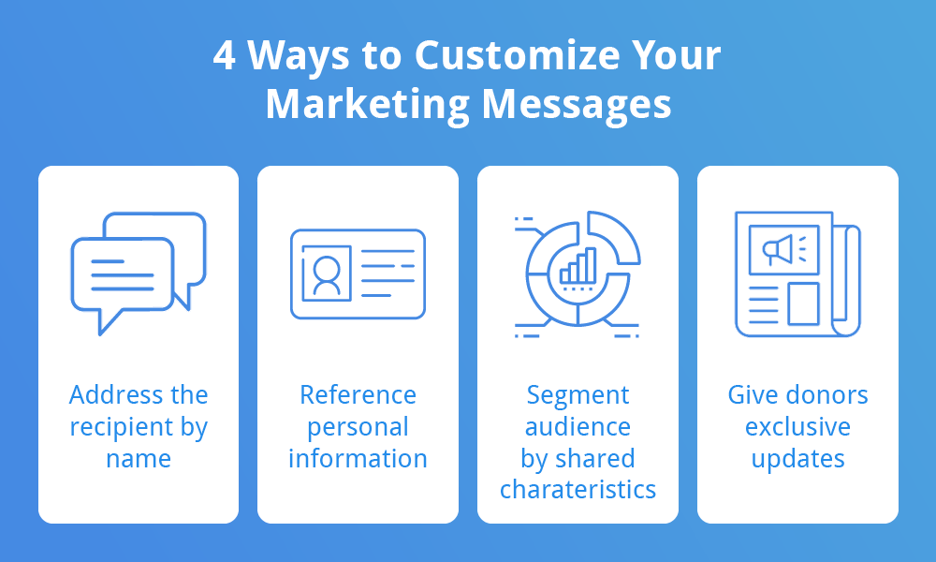Guest Post by Brad Dowhaniuk of 99Pledges
If you’re already familiar with pledge fundraising, you may know about some of the benefits of using this method. For example, let’s say your nonprofit organized a read-a-thon and asked donors to pledge $3 for every hour their participant spends reading. Not only are participants in control of how much they earn for your cause, but donors may be willing to give more than they normally would (especially if you offer flexible payment options).
To get the most out of pledge fundraising, it’s essential that you market your campaigns. You need to get in touch with your audience through the platforms they use most often, at the right time, and with a message that resonates with them.
In this guide, we’ll walk through the steps you can take to effectively promote your next pledge fundraiser:
- Develop a unified campaign message.
- Select communication channels.
- Tailor your messages.
On top of boosting your pledge fundraising results, these marketing strategies can connect you with new audiences and help your nonprofit secure opportunities like business sponsorships that expand your network of supporters. Let’s get started!
1. Develop a unified campaign message.
Every successful marketing campaign starts with a clearly defined message that serves as a common thread between each social media post, email, text message, or mailer included in the campaign. For example, the iconic “Share a Coke” campaign by Coca-Cola infused every communication in the campaign with friendliness and sociability to build a personal connection with customers. While your campaign will likely be on a much smaller scale, aim for this level of consistency, memorability, and clarity with your message.
When drafting a slogan or message for the campaign, keep these things in mind:
- The format of the fundraiser. Is your fundraiser taking place entirely online, ending with a laid-back virtual meetup? Or, is it culminating in a high-energy, in-person event? Defining the format can help set the tone for the overall campaign and, therefore, your central message. Additionally, you’ll be able to brainstorm specific ways to tie the message into your campaign, like creating a unique hashtag for a virtual event or making posters for an in-person celebration.
- Your intended audience. Your target audience is made up of the people who will support your fundraiser by participating or donating, so it’s critical that you make a compelling case for them to support it. For example, 99Pledges’ guide to kids’ fundraisers explains that choosing events that are fun for kids will help boost participation and fundraising revenue, which also applies to your marketing efforts. Based on your audience’s preferences, you may need to modify your message to be more serious, casual, friendly, authoritative, etc.
- The way you’ll communicate. While you may not have selected the exact channels you’ll use during your campaign yet, it’s key to have an idea of the media you’ll use to convey your message. For example, you’ll most likely need to communicate the message through text, graphics, and video—will it be easy to understand in each of these formats?
It’s important to remember that this message should be extremely short and easy to recall, ideally falling between two to seven words long. Think of this message as one that captures the audience’s attention and summarizes the purpose of the fundraiser rather than communicating every nuance of your cause.
2. Select communication channels.
In the age of advanced technology, it’s easier and more affordable than ever to reach your audience through multiple communication channels. Plus, as a nonprofit, you could have access to grants or exclusive discounts that make paid media more accessible. By using more than one channel, you’ll increase the likelihood of reaching your target audience and making a strong impression on them.
Using a mix (or all) of the following channels will be most effective for marketing a pledge fundraiser:
- Social media
- Search engines
- Text
- Direct mail
- Flyers
If you have a few different platforms in your marketing mix, it can quickly become overwhelming to manage posting regularly across all of them. Consider using a marketing tool like social media scheduling software to build a calendar of posts ahead of time that will go live automatically.
Additionally, each of these channels should lead back to a high-quality webpage dedicated to your pledge fundraiser. Make sure to add links to your pledge page where supporters can sign up to participate or donate, and incorporate details like when the fundraiser will end, how to find personal donation pages belonging to individual participants, and the logistics of any events you’ll hold.
3. Tailor your messages.
Whether you’re reaching supporters via email or social media posts, the message they receive should feel relevant to both your organization and their personal reasons for engaging with it.
Here are some simple ways to personalize your marketing messages:

- Address them by name. If you are using a more personal method of communication like email or pledge cards, including the donor’s name in the greeting can add a warm touch. For best results, Fundraising Letters’ guide to pledge cards also recommends briefly explaining the purpose of the campaign, what donations will accomplish, a suggested pledge amount, and payment options.
- Reference personal details. Perhaps you know which participant the donor supported during previous fundraisers, or maybe you can reference other past involvement with your organization. Calling out specific things about the donor and their relationship with your nonprofit recognizes their support and makes them feel valued.
- Segment your audience. Segmentation can make it easier to infuse those personal details into your messages. You might sort your audience by average donation amount, for example, and request varying pledge amounts for each group.
- Provide donor-exclusive updates. Make anyone who pledged a gift to your campaign feel like they are part of an exclusive club by providing regular updates about your fundraising progress. For example, if you are fundraising for your school in order to buy new textbooks, you can use a fundraising thermometer to show donors how close you are to reaching this goal.
These ideas are easy ways to get started, but this is also a good time to get creative with your marketing. Once you know your audience, you’ll have a deep understanding of what messaging they’ll have a connection with.
Taking the time to plan, execute, and evaluate a comprehensive marketing campaign for your pledge fundraiser will set your nonprofit’s future fundraisers up for success. Every new supporter you reach with this campaign has the potential to share your mission with their personal networks, spreading the word about your cause far and wide.
About the Author: Brad Dowhaniuk is the co-founder of 99Pledges, which provides schools and teams with an easy-to-use, web-based fundraising solution to manage and drive success in Fun Runs, jog-a-thons, baseball hit-a-thons, and much more.
